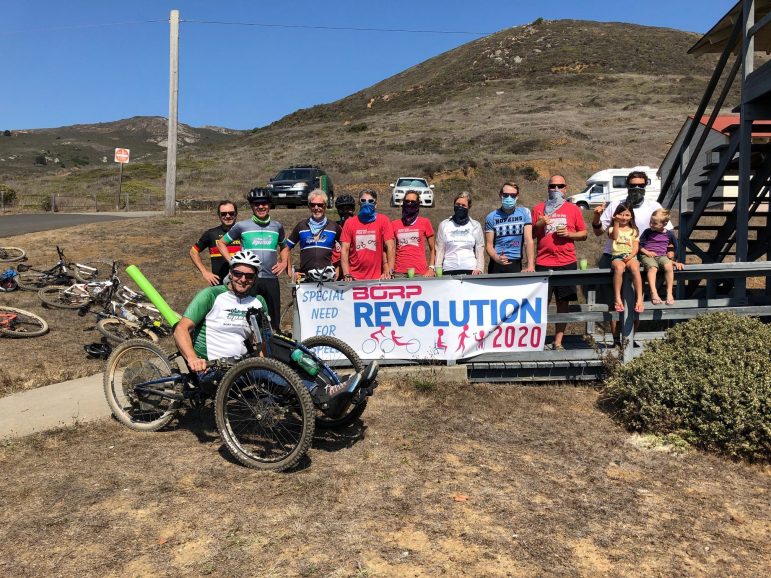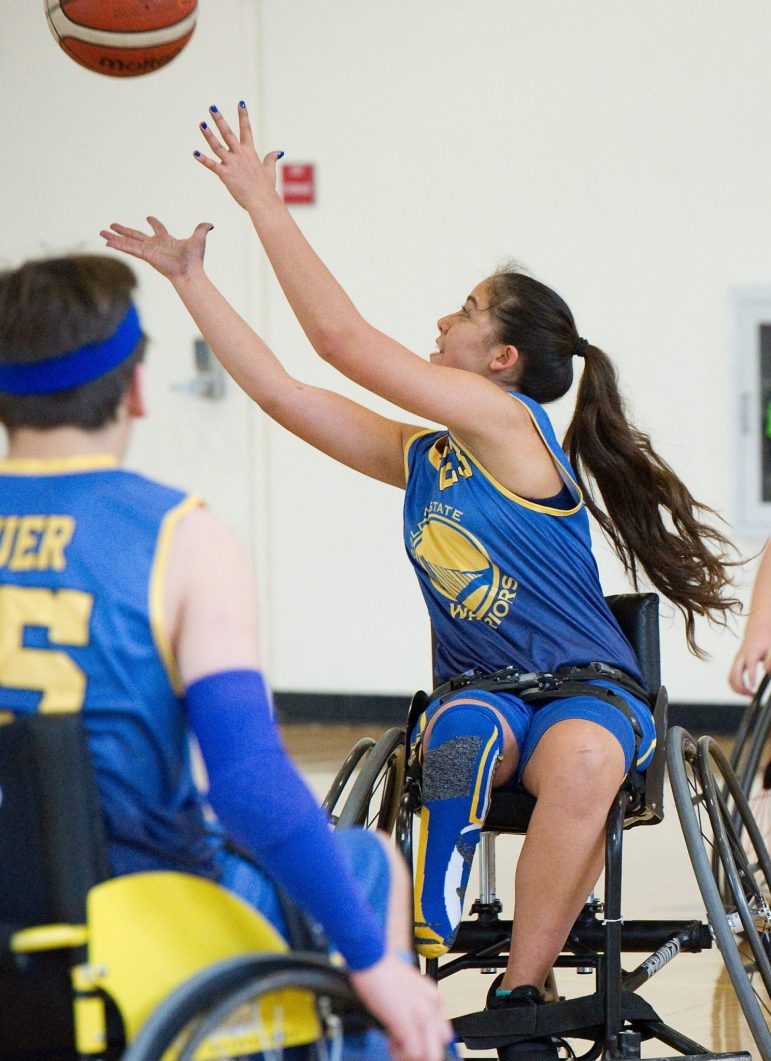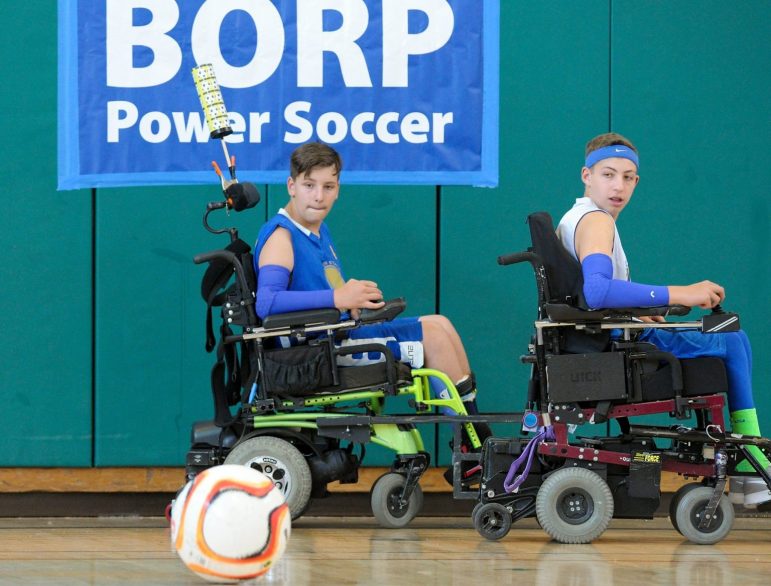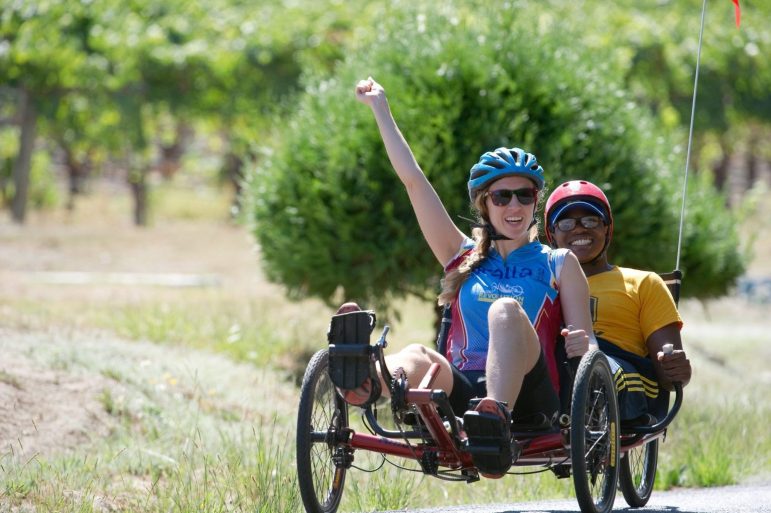
Based in Berkeley, Bay Area Outreach & Recreation Program (BORP) has provided people with physical disabilities a venue for adaptive exercise since 1976. Children, youth and adults can use BORP’s extensive selection of adaptive bicycles at its Berkeley center. Before the pandemic, BORP was also a place for activities that include goalball, wheelchair basketball, sled hockey and power soccer.
But BORP is about more than just exercise — its programs and fundraisers, like the annual BORP Revolution, give people a place to socialize and make new connections while enjoying physical activity, says Elaine Beale, BORP’s director of development. The pandemic and shelter-in-place forced the organization to adapt quickly, but it was ready for it.
We spoke with Beale, about how the organization had to change as a result of COVID-19, and how those changes have expanded their reach beyond the greater San Francisco Bay Area.
How many people do you serve?
We serve about 1,000 people per year. We’re based in Berkeley, so we mostly serve people in Alameda and Contra Costa counties. But we’re such a unique organization that we get people from all over the greater Bay Area — San Mateo, Santa Clara, Sonoma, Solano and San Francisco counties. We’ve even had people from as far away as Watsonville visit our cycling center in Berkeley. Now that we have established an online fitness studio, and our classes are free on the internet, we’re getting people from as far away as Nevada, Delaware, Canada and Mexico.
BORP events in the past were social, with everyone getting together for recreation and activities. What did it take to change that model in the COVID era?
We’ve been aware that travel can be difficult for people with disabilities, and there are not a lot of places for adaptive exercise. Though our physical program is based in the Ed Roberts Campus near the Ashby BART station in Berkeley, people had a hard time getting there. We knew that, and we were developing an online program before the pandemic hit. We’d already done the pre-work, and the pandemic accelerated everything. We got our online fitness program up and running in about a month.
We’ve had more than 3,200 visits to the online fitness program since we started it in April. Each week we serve an average of about 140 people, with numbers growing steadily. We have six classes running every week, and may add one or two more.

Before the pandemic, BORP offered a range of activities that included youth wheelchair basketball and Power Soccer. (Photos courtesy of Scott Goodman) 
Our cycling center was closed for several months, but we reopened it in June. We have the largest selection for adaptive cycles in the country, probably in the world. This includes various types of recumbent bikes, side-by-side tandems and handcycles. We also have various types of bikes that are suitable for children. Many families come together so they can cycle as a group with their children with disabilities. (Prior to COVID, we also provided regular group rides for youth and for veterans—these will resume when we are able to do so.)
We can pretty much put anyone on a bike. Visitors need to make an appointment and we have safety protocols in place. We have about 50 people each week visit the center, which is close to the Berkeley Marina in Aquatic Park — a nice place to take a ride. We expanded our hours from three days a week to five. We are now open from 9 a.m. to 5 p.m., Tuesday through Saturday.
We also have adventures and outings programs, where youth and adults visit parks and trails. But with the pandemic, those ended, and now we are doing those programs virtually, via Zoom. Program leaders may describe their walk through the woods in Yosemite or describe a climb in great detail. Many of the people we serve are confined to their homes, so these regular meetings have become social activities.
BORP is about physical activity, but it is also about making connections with people. People with physical disabilities can feel left out because of lack of access.
What is the BORP Revolution?
The BORP Revolution is the annual fundraiser that we started in 2002. For the first 18 years, it was a cycling event that happened in Sonoma county, and about 200-300 people (with or without physical disabilities) participated. They trained for the event and asked people to sponsor them. We raised $180,000 to $240,000 each year through the Revolution. This year, our 19th, we had to pivot to make it virtual. We decided to offer options. For example, people can register to do any exercise outdoors, select a goal for themselves and ask people to sponsor them. We’re also including our online audience — we offered a menu of online classes for three days. We’ve had (more than) 170 people register this year, and so far we have raised more than $200,000; our goal is $210,000. Poor air quality delayed a lot of people, so we have told people they can complete their physical challenge by the end of October, and we are keeping the fundraising platform open until mid-November.

Who benefits from the BORP Revolution?
The funds we receive, minus expenses, which were minimal this year, go to support BORP’s programs. Those programs are our fitness classes, adventures and outings, the cycling center and other activities. We do get some grants each year, and many of them fund specific things. With the Revolution money, we can put it wherever we need it. It’s an important income stream.
What message do you want to send right now about your work in the community?
Everyone recognizes that all of us have been impacted, our health has been impacted and many people are isolated. But for people with physical disabilities, the impact is so much more amplified. Our programs help people experience the outdoors, or remain inside and safe and still get exercise. Our programs connect people to the community. We have been told our programs are a lifeline. They increase people’s quality of life immensely. And our programs are not just for people who are in wheelchairs.
Our classes include seated yoga, seated cardio dance, seated tai chi, as well as an inclusive strength and conditioning and also a mindful movement class (which can be done by people with a wide range of abilities). We also adapt our classes so that people with vision impairments can participate. Instructors adapt the class to everyone in the class, so you can be ambulatory, elderly or in a wheelchair and get a great work out. The way people relate to their bodies shifts when they are physically active.